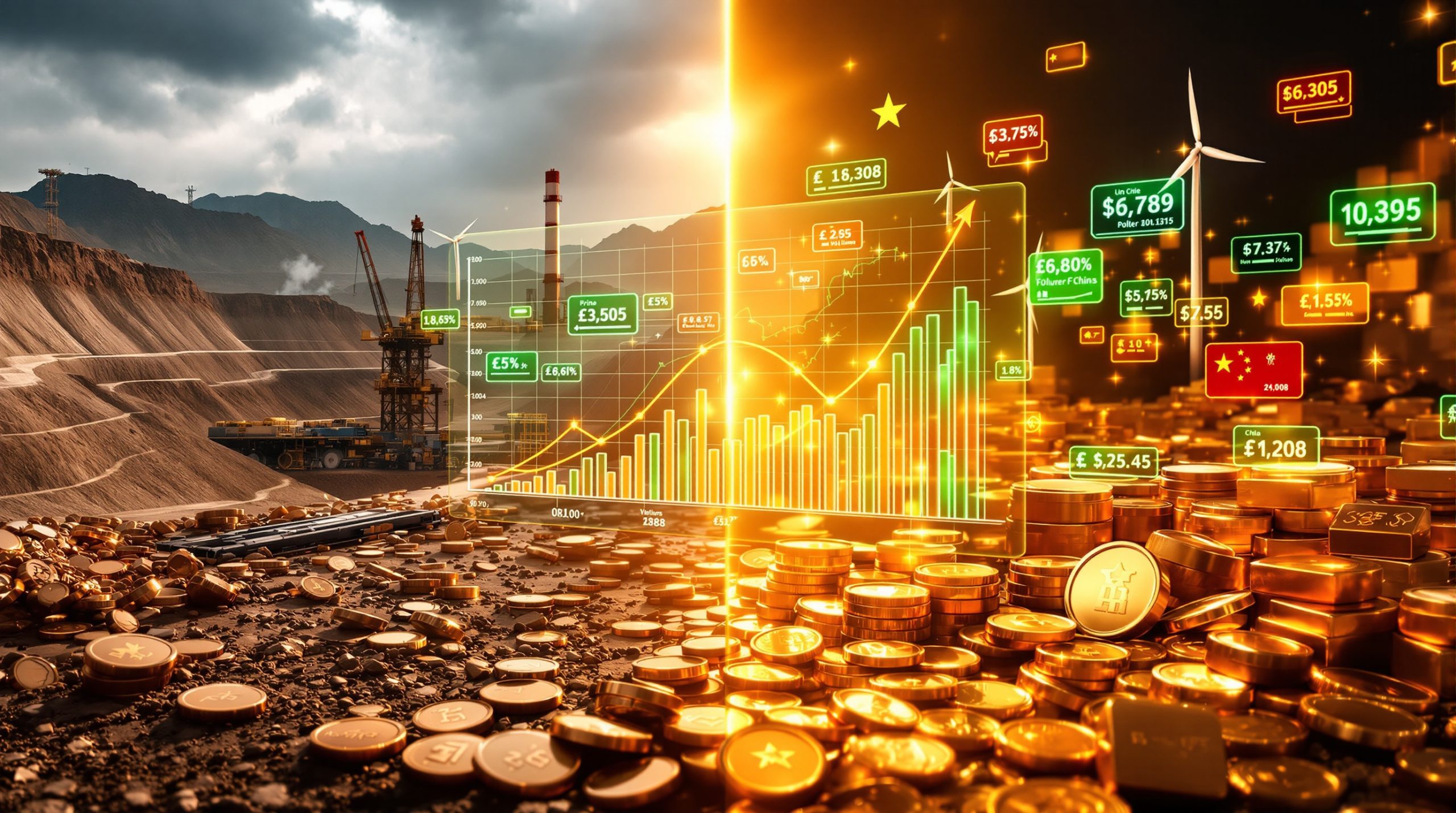Understanding Uranium Supply Chain Challenges: From Mining to Nuclear Fuel
The uranium supply chain challenges are evident from the very start. The uranium supply chain is one of the most complex resource networks in the energy sector. It spans multiple continents and employs specialised processes that transform raw uranium ore into fuel for nuclear reactors. Furthermore, uranium supply chain challenges affect every stage—from mining to fuel fabrication.
Mining extraction methods vary considerably. Conventional mining (underground or open-pit) contrasts with in-situ recovery (ISR) methods. For instance, some operations utilise us isr uranium production to extract uranium efficiently. Each method brings distinct environmental and economic considerations.
Countries such as Kazakhstan lead global production, contributing over 43% of worldwide supply. This concentration creates vulnerabilities. Namibia, Canada, and Australia follow, with Australia holding roughly 28% of global reserves. However, active mining remains limited in some regions. In addition, these dynamics influence strategic planning across the industry.
Mining and Milling Operations
Uranium extraction processes differ across the globe. Conventional techniques and innovative ISR both require complex logistics. After extraction, the ore is milled into uranium oxide concentrate, commonly known as yellowcake. The grade disparity is dramatic. For example, Saskatchewan's Cigar Lake features ore grades exceeding 20%, making it approximately 500 times richer than average deposits.
This grade variation significantly impacts production economics. Environmental footprints and operational costs are directly affected. Moreover, this complex matrix of production methods underscores uranium supply chain challenges for stakeholders involved in mining and processing.
Conversion Facilities
Once the ore is processed into yellowcake, it must be converted into uranium hexafluoride (UF₆). This conversion is critical for the enrichment process. However, there are only four major commercial facilities worldwide, located in the United States, Canada, France, and Russia. The current global conversion capacity stands at roughly 62,000 tU/year.
Industry experts are concerned. They note that prolonged underinvestment and ageing infrastructure exacerbate supply issues. Furthermore, developing new conversion capacity may require investments exceeding $1 billion and at least five years of development time. Consequently, this bottleneck further highlights ongoing uranium supply chain challenges.
Enrichment Technology
Natural uranium, containing just 0.7% uranium-235, must undergo enrichment to meet reactor needs. Gas centrifuge technology dominates this sector, replacing older methods such as gaseous diffusion. However, geopolitical challenges remain acute. Russia controls nearly 46% of global capacity, creating risks for Western nations.
Western facilities run at near full capacity. Strict non-proliferation controls limit technology transfer. In addition, regulatory hurdles complicate the development of new facilities. As a result, emerging economies must carefully weigh the benefits of domestic versus imported enrichment capacity.
Fuel Fabrication
Fuel fabrication transforms enriched uranium into reactor-ready fuel assemblies. This process involves converting the material into uranium dioxide powder, pressing it into ceramic pellets, and incorporating it into zirconium alloy tubes. The market is dominated by a few key players such as Westinghouse, Framatome, Global Nuclear Fuel, and TVEL (Russia).
Each supplier often specialises in specific reactor designs. This limited diversity can create supply vulnerabilities when geopolitical tensions escalate. For instance, utilities may encounter constraints when relying on a small supplier base.
What Geopolitical Risks Threaten Uranium Supply Chains?
The uranium supply chain spans many continents, exposing it to diverse geopolitical tensions and regulatory shifts. For example, the influence of key players often leads to rapid changes in market sentiment. Furthermore, uranium supply chain challenges are compounded by political and economic pressures across various regions.
Russian Market Dominance
Russia maintains significant control over the nuclear fuel cycle. It holds approximately 46% of global enrichment capacity and 14% of uranium conversion services. In addition, state-owned Uranium One has investments in Kazakhstan, further entrenching Russia’s influence.
Despite sanctions imposed after the Ukraine invasion, Western utilities remain heavily reliant on Russian services. Industry experts have lamented that even reputable suppliers have hesitated to sign new contracts. In response, Russia has accelerated domestic uranium development projects and strengthened ties with countries like Niger.
Kazakhstan Production Concentration
Kazakhstan supplies over 43% of the world’s uranium. This creates significant concentration risks in the supply chain. Political stability in Kazakhstan is occasionally called into question, as seen during civil unrest in January 2022.
Furthermore, most Kazakh uranium exports transit through Russian territory. This arrangement increases uncertainty amid ongoing international tensions. Consequently, Kazakhstan’s national atomic company is exploring diversification strategies beyond its borders.
African Mining Uncertainties
In Africa, political instability has disrupted operations. For example, a military coup in Niger in July 2023 affected French nuclear operations at the Somair mine. Conversely, in Namibia, local operators have maintained stable government relations despite global uncertainties.
In Namibia, issues such as namibia uranium halt further complicate the landscape. Similar challenges are observed in Malawi, where infrastructural and political uncertainties persist, hindering operational stability across the region.
Western Supply Vulnerabilities
The United States imports over 95% of its uranium needs. This heavy dependency raises serious energy security concerns. Domestic production has weakened because of regulatory hurdles and prolonged low prices.
European enrichment capacity also falls short of regional needs. This shortfall forces continued reliance on Russian services despite geopolitical risks. Measures such as the Prohibiting Russian Uranium Imports Act, effective from 2028, aim to address these vulnerabilities.
How Are Market Dynamics Affecting Uranium Supply?
The uranium market is characterised by significant price fluctuations and supply pressure. It currently operates amid high volatility, affecting both suppliers and consumers. Market observations suggest that these fluctuations have far-reaching consequences for long-term supply stability.
Price Volatility Impacts
Uranium spot prices have exhibited dramatic swings. Prices have ranged from approximately $18/lb in 2016 to over $80/lb in 2023. Recently, there have been observations of prices “grinding up to 82 to 84”.
Some industry participants believe prices in the $65‑90/lb range are needed for new mine development. Additionally, higher thresholds have been suggested. For example, certain executives argue that prices in the triple digits are necessary. In addition, market reports on uranium market volatility further validate this uncertainty.
Moreover, assessments by experts coupling these trends with a recent supply deficit outlook emphasise the need for sustained price increases.
Secondary Supply Depletion
For several decades, secondary supplies from decommissioned military materials and inventory drawdowns provided significant support. The end of the Megatons to Megawatts programme further restricted this buffer.
As a result, the market now leans more heavily on primary production. With secondary sources largely exhausted, there are heightened concerns over meeting future demand.
Financing and Contracting Trends
Financing uranium projects requires capital investments ranging from $500 million to over $2 billion. Extended permitting timelines only add to the complexity.
Contracts have shifted from long-term (7‑10 year) to medium-term (3‑5 year) agreements. For instance, Paladin Energy recently secured its “13th long-term contract”. Similarly, Peninsula Energy cut ties with multiple contracts, a decision that many have termed an “interesting strategy”.
This evolving landscape underscores the financial and market risks that underpin uranium supply chain challenges.
What Technical Bottlenecks Exist in the Uranium Supply Chain?
Numerous technical constraints limit rapid expansion within the industry. These bottlenecks affect the entire production cycle—from mining through to fuel fabrication.
Mining Development Timelines
New conventional uranium mines typically require 7‑10 years from discovery to production. Even more nimble in-situ recovery projects face development cycles of 3‑5 years.
These prolonged timeframes are often extended by complex permitting processes and skilled labour shortages. Furthermore, these challenges are a critical part of uranium supply chain challenges for industry stakeholders.
Conversion Capacity Constraints
The uranium conversion sector is hampered by the existence of only four major facilities globally. Underinvestment and ageing infrastructure exacerbate the situation.
New conversion investments demand over $1 billion and a minimum of five years to come online. As a result, conversion prices have surged from below $10/kg to around $50/kg. These trends contribute to the ongoing bottlenecks within the supply chain.
Enrichment Technology Barriers
Gas centrifuge technology forms the backbone of the enrichment process. However, strict non-proliferation controls and limited manufacturing capacity constrain new market entrants.
Economic and regulatory challenges remain significant hurdles for expansion. In addition, some developments such as laser enrichment are promising yet remain unproven on a commercial scale.
Recent reports even mention us uranium disruptions in the context of these limitations, adding further uncertainty to the global scenario.
Transportation Logistics
The nuclear fuel cycle also faces logistical challenges. Specialized packaging, strict regulatory requirements, and limited certified carriers create transport bottlenecks.
Furthermore, differing international regulatory standards add time and complexity to shipments. These factors, combined with the need for robust physical security protocols, accentuate the overall supply chain difficulties.
How Is Nuclear Energy Growth Affecting Uranium Demand?
Nuclear energy is experiencing a resurgence, driven by decarbonisation efforts and energy security concerns. This growth exerts additional pressure on uranium demand.
Reactor Life Extensions
Many U.S. nuclear reactors now receive 20‑year licence renewals, effectively extending operational lives to between 60 and 80 years. Each reactor typically consumes approximately 400,000 lbs of uranium oxide annually.
European nations are also reconsidering nuclear phase-out decisions. This has spurred renewed long‑term demand for uranium. Furthermore, projects like the patterson uranium project demonstrate innovative efforts to secure new supply.
Small Modular Reactor Development
Over 80 designs for Small Modular Reactors (SMRs) are under development internationally. Initial deployments are expected between 2026 and 2030.
SMRs could standardise fuel requirements and improve supply chain efficiency. Market analysts have predicted that SMRs might drive additional demand of 50‑70 million pounds annually by 2035.
Data Centre Power Requirements and Asian Expansion
Major technology companies are exploring nuclear supply options for powering data centres. For instance, Microsoft has entered a 20‑year power purchase agreement linked to reactor restarts.
Similarly, aggressive nuclear expansion in Asia is evident. China, India, South Korea, and Japan are all pursuing new reactor builds. These developments collectively represent the largest growth area for global nuclear power.
What Environmental and Social Factors Impact Uranium Production?
Environmental and social issues have become increasingly significant in uranium production. These challenges affect project timelines and operational strategies.
Water Management and Tailings
Conventional mining requires between 500‑1,500 gallons of water per ton of ore processed. This intensive use poses major water management challenges, especially in arid regions like parts of Namibia and Australia.
Moreover, controlling tailings—waste with residual radioactivity—requires elaborate containment systems and long‑term monitoring. These requirements add significant costs and underscore the environmental stakes involved.
Indigenous Rights and Public Perception
Many uranium deposits lie on or near indigenous lands in countries such as Canada, Australia, and the United States. Ensuring free, prior, and informed consent is now standard practice.
Revenue sharing and employment agreements have become common. However, historical legacy issues and public opposition to uranium mining continue to influence project approvals. These factors further complicate the overall supply chain.
How Are Supply Chain Participants Responding to Challenges?
Industry stakeholders are adapting by diversifying strategies throughout the fuel cycle.
Utility Contracting Strategies
Utilities are shifting their strategies by diversifying supplier portfolios. They are gradually moving away from heavy reliance on single regions or suppliers.
Long‑term fuel programmes and direct contracts are emerging as key trends. For instance, new approaches by companies such as Bannerman Energy illustrate a strategic shift. Additionally, some utilities have opted for flexible, market‐related pricing mechanisms.
Producer Development Approaches
Producers are now employing phased development plans with expansion optionality. This approach helps mitigate risks amid volatile market conditions.
For example, some developers are moving forward with projects without traditional term contracts. One industry source even highlighted that certain projects might advance without long‑term commitments. This streamlining approach aims to overcome traditional financing constraints, thereby easing some aspects of uranium supply chain challenges.
Furthermore, international investors are increasingly eyeing the opportunities. Collaborative ventures and direct investments from end‑users are becoming more frequent in this evolving market.
Government Initiatives and Industry Collaboration
Governments worldwide are stepping in by revising policies to support domestic production. The U.S. is establishing strategic uranium reserves and streamlining permitting.
Similarly, European and Australian policies are under review to better align with global market dynamics. Collaborative initiatives among industry players are also advancing, with joint ventures targeting vertical integration across the fuel cycle.
What Future Innovations Could Transform Uranium Supply Chains?
Emerging technologies promise to address many of the current limitations in the uranium supply chain.
Advanced Mining Techniques
Artificial intelligence is now being employed to enhance exploration targeting. Autonomous equipment is reducing labour requirements and improving safety standards.
Additionally, bioleaching and real‑time monitoring systems are optimising recovery rates while reducing environmental impacts. These approaches could revolutionise mining efficiency and safety.
Fuel Cycle Innovations and Digital Management
Innovations such as high‑assay low‑enriched uranium (HALEU) are emerging. Accident‑tolerant fuel designs and direct disposal pathways are also under development.
Furthermore, blockchain technology and predictive analytics are providing enhanced material tracking and operational insights. Digital twins of processing facilities even allow simulation of process improvements without operational disruptions.
Circular Economy Approaches
Reprocessing spent fuel to recover additional energy is a promising avenue. Recovering uranium from mine tailings and unconventional sources could further expand available resources.
These innovations have the potential to reduce reliance on virgin primary production and address longstanding supply challenges.
What Are the Long‑Term Outlook and Key Indicators for Uranium Supply?
Looking ahead, the supply gap is expected to widen. Current annual production of 140‑150 million pounds of U₃O₈ will likely be insufficient.
Projections suggest demand could reach 390‑530 million pounds by 2040. Meeting these requirements will require substantial new investments and greenfield projects.
Critical Development Milestones and Price Signals
Restarting idled capacity in regions such as Wyoming, Kazakhstan, and Australia is anticipated between 2023 and 2026. Brownfield expansions at sites like Cigar Lake and Husab are expected soon after.
Investments will be triggered by sustained spot prices above $75‑80/lb for expansions and $90‑100/lb for greenfield projects. Moreover, higher enrichment SWU prices above $150 could drive further capacity expansion.
Market Evolution and Future Innovations
The industry is witnessing increased vertical integration between miners and fuel cycle participants. Direct investments from end‑users are also emerging as a new trend.
Innovative financial instruments and streamlined contract mechanisms promise improved market liquidity and risk management. As one industry executive noted, "now the industry has to deliver. We're way beyond the forecasts and the spreadsheets and the blue sky."
In conclusion, the nuclear energy resurgence underscores the critical need to overcome existing bottlenecks. Addressing these uranium supply chain challenges will require coordinated efforts from governments, producers, utilities, and investors alike. The coming years will test whether the industry can transform these challenges into opportunities for sustainable, secure, and efficient uranium supply.
Furthermore, by embracing technological advancements and strategic collaboration—such as insights from global uranium supply—the industry may finally bridge the supply gap while bolstering energy security worldwide.
Ready to Spot the Next Major Uranium Discovery?
Stay ahead of the market with real-time alerts on significant ASX uranium discoveries, powered by Discovery Alert's proprietary Discovery IQ model that transforms complex mineral data into actionable investment insights. Explore why historic discoveries can generate substantial returns by visiting Discovery Alert's dedicated discoveries page and begin your 30-day free trial today.




